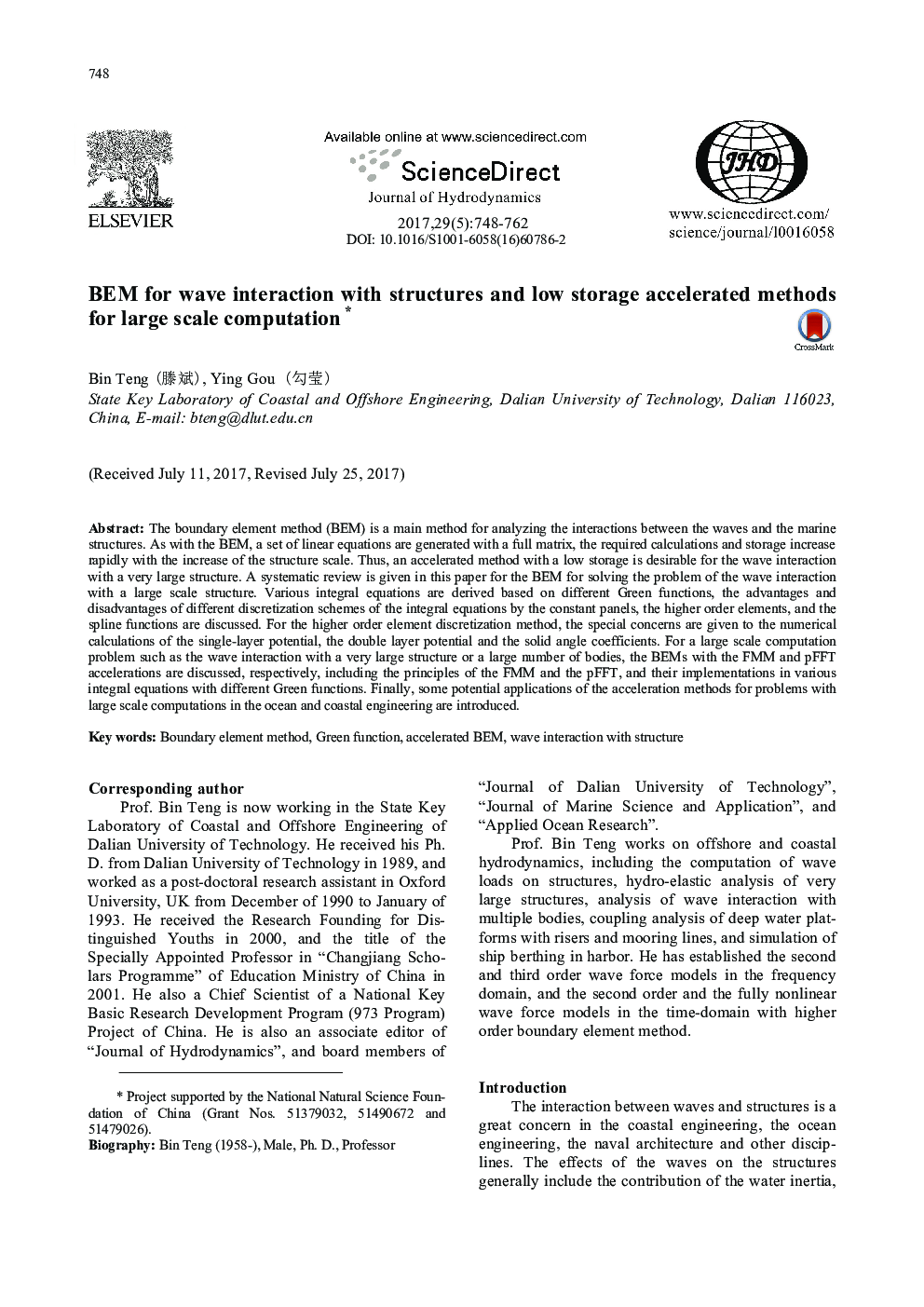| Article ID | Journal | Published Year | Pages | File Type |
|---|---|---|---|---|
| 5473574 | Journal of Hydrodynamics, Ser. B | 2017 | 15 Pages |
Abstract
The boundary element method (BEM) is a main method for analyzing the interactions between the waves and the marine structures. As with the BEM, a set of linear equations are generated with a full matrix, the required calculations and storage increase rapidly with the increase of the structure scale. Thus, an accelerated method with a low storage is desirable for the wave interaction with a very large structure. A systematic review is given in this paper for the BEM for solving the problem of the wave interaction with a large scale structure. Various integral equations are derived based on different Green functions, the advantages and disadvantages of different discretization schemes of the integral equations by the constant panels, the higher order elements, and the spline functions are discussed. For the higher order element discretization method, the special concerns are given to the numerical calculations of the single-layer potential, the double layer potential and the solid angle coefficients. For a large scale computation problem such as the wave interaction with a very large structure or a large number of bodies, the BEMs with the FMM and pFFT accelerations are discussed, respectively, including the principles of the FMM and the pFFT, and their implementations in various integral equations with different Green functions. Finally, some potential applications of the acceleration methods for problems with large scale computations in the ocean and coastal engineering are introduced.
Related Topics
Physical Sciences and Engineering
Engineering
Ocean Engineering
Authors
Bin (æ»æ), Ying (å¾è¹),
